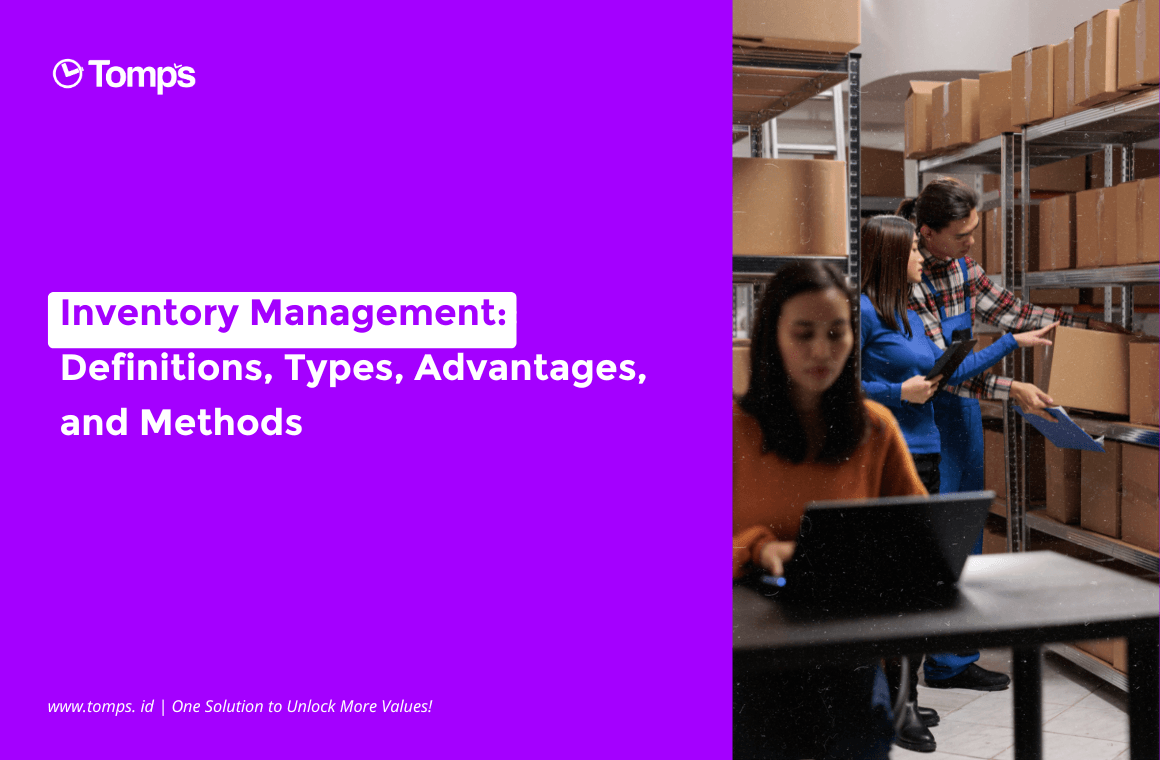In running a project, the level of project success is highly dependent on the accuracy of the project manager in carrying out project management effectively and efficiently. Here are the important things about project management that Tom-Mates need to understand!
Definition of Management
According to Hasibuan (2006:2), management is the science and art of managing the process of utilizing human resources and other resources effectively and efficiently to achieve a certain goal. So management is a human effort to achieve goals most effectively and efficiently. This business is part of the management process, which is a series of activities carried out sequentially or chronologically. The series of activities include goal setting, planning, organizing, actuating, and controlling.
Project Definition
According to the KBBI, a project is a work plan with specific targets (irrigation, power generation, and so on) and with a firm completion. Experts put forward the definition of a project as follows (Raharja, 2014):
- Iman Suharto stated that a project can be defined as an activity that takes place within a certain period with a limited allocation of resources and is intended to carry out a task that has been outlined.
- D.I Cleland and W.R. King argued that the project is a combination of various resource activities that are collected in a temporary organizational container to achieve a certain goal.
So the project is an activity that has limitations on time, budget, and resources and has its specifics for the product to be produced. One example of a project that has been hotly discussed lately is the construction of the Mandalika International Circuit in the Mandalika area, Central Lombok, West Nusa Tenggara.
Understanding Project Management
Project management is an effort made to work on projects efficiently and effectively which is limited by budget, schedule, and quality. These efforts include the process of planning, organizing, leading, and controlling the company’s resources to achieve the predetermined targets. The main focus of project management is the achievement of the final project objectives with all available constraints, time, and available funds.
PMBOK (Project Management Body of Knowledge) translated by Budi Santoso (2009:3) defines project management as the application of knowledge, skills, tools, and techniques in project activities to meet project needs. project
Project Management Objectives
The core objective of project management is to manage management functions so that they run optimally effectively and efficiently. In carrying out project management objectives, it is necessary to control quality, cost, and time simultaneously.
Various Project Management Objectives
1. Done on time
Time is crucial to keep the process running according to the timeline that has been designed. This is where the role of management is to determine when to run and walk normally following the agreed time plan at the beginning.
2. Keeping the budget
Budgeting is a sensitive issue that will affect the sustainability of the next project. The project management can keep the budget to a minimum by producing the best quality.
3. Maintain quality
To maintain quality, the benchmark is a standard that has been mutually agreed upon so that the project does not exist and is completed.
4. Launch the project
Ideally, a project is a project that is completed according to the initial planning both in terms of time, budget, and quality. This is where management plays a role in keeping the project completed smoothly without significant obstacles.
Examples of Project Management Benefits
1. Against Management
- Provides a project definition with the performance to be generated.
- Keeping management and clients informed about project progress
- Encourage client engagement because they know what’s going on
- Provide historical data bank
- Build quality and control
2. Against Project
- Forcing project managers to plan and evaluate together with the team and clients
- Maintain the discipline that helps avoid escaping responsibility and consider the balance between funds, resources, time, and quality.
- Resolve potential problems in time to make appropriate changes.
3. Against Humans
- Makes it easy to change a new project manager in a project
- Focus on problem resolution by realizing tasks from existing work and time available
Aspects to Take Care of Project Management
In project management, things that need to be considered so that the project output is by the planned goals and objectives are to identify various problems and require careful handling, as follows (Dimyati & Nurjaman, 2014:24-25) :
1. Finance
Relates to project spending and financing. Finance can come from own capital or loans from banks or investors in the short or long term.
2. Budget
Relates to planning and controlling costs during the project. Careful and detailed planning will facilitate the cost control process so that the costs incurred are by the planned budget.
3. Human Resource Management
The needs and allocation of human resources during the project fluctuate. In order not to cause complex problems, HR planning is based on a project organization that was formed previously by carrying out steps, HR staffing processes, job descriptions, workload calculations, descriptions of HR authorities and responsibilities, as well as explanations of project goals and objectives.
4. Production Management
Relates to the outcome of the project. The final project result is negative if the planning and control process is not good. So that this does not happen, various efforts are needed to increase the productivity of human resources, increase the efficiency of production and work processes, and improve the quality of production through quality assurance and quality control.
5. Price
This problem arises because of external conditions in terms of price competition, which can be detrimental to the company, for example, because the products produced require higher production costs and cannot compete with other products.
6. Effectiveness and efficiency
This problem can be detrimental if the function of the resulting product is not fulfilled or ineffective or the efficiency factor is not met so that production efforts require large costs.
7. Marketing
Related to the development of external factors related to price competition, promotional strategies, product quality, and incorrect market analysis of the resulting production.
8. Quality
Related to the quality of the final product that will increase competitiveness and provide customer satisfaction.
9. Time
Time problems can cause cost losses if the project progress is slower than planned and vice versa will be profitable if it can be accelerated.
Scope of Project Management
In carrying out a project, it is necessary to have a project management scope as a reference for all the work that must be done in order to produce a project product and the processes that must be carried out to create the project in question. In simple terms the scope of project management makes it easy to know what to do and what not to do.
According to Schwalbe quoted from the book Dimyati & Nurjaman (2014:21), each project will be limited by scope, time and cost. For the project to be successful, the project manager must consider the following:
- The scope of work to be performed as part of the project, as well as the products and services or outcomes desired by the customer (the sponsor) that can be produced in a project.
- The time required to complete a project.
- The cost required to complete a project.
A process on Project Management Scope
1. Initiate
This process includes selecting processes that support an organization’s strategic plans that involve the organization’s long-term goals.
2. Project management scope planning
This process describes how the project management scope is defined, verified, and controlled. The main focus of this process is the scope management plan, which is how the project team will prepare the project management scope statement, verify the project results, and control the changes that will occur from the project management scope. The inputs needed in planning the scope of project management are project charters, plenary scope statements, project management plans, and the rules and procedures that apply to the project.
3. Defining the scope of project management
This process reviews the project charter and preliminary scope, adding information from the planning process for the project management scope and changes that have been approved so that a mutually agreed definition can be obtained. The main result of this process is the project scope statement. Some of the information that must be included in the project scope statement:
- Project description including the purpose of the project
- A detailed description of deliverables (characteristics, requirements)
- Project success criteria
4. Verify project management scope
It is the process of accepting the “final” project scope statement by stakeholders. Inputs, in this case, include project scope statements, project scope management plans, and deliverables with inspection tools by customers.
5. Control changes to the project management scope
Is a process related to the factors that can lead to changes in the scope and how to control the effects due to changes that occur? If there are uncontrolled changes, it will result in an expansion of the scope of project management. There are several suggestions for suppressing changes to the scope of project management:
- Convinced that the project was initiated to address existing problems
- Always involve clients and stakeholders optimally
- Conduct regular meetings and report on project progress regularly







